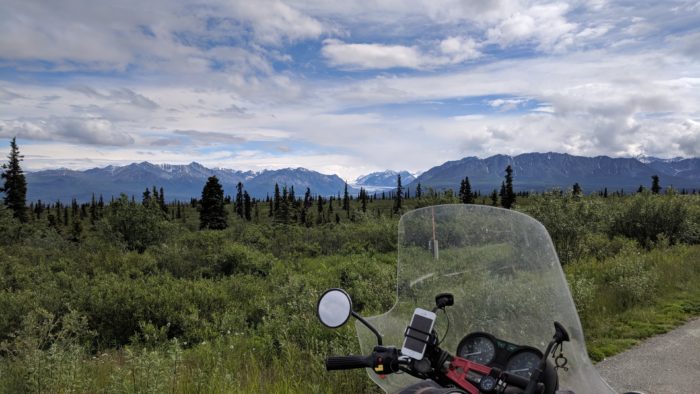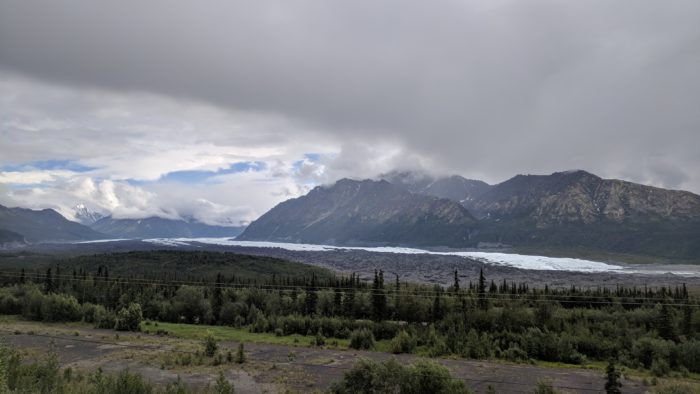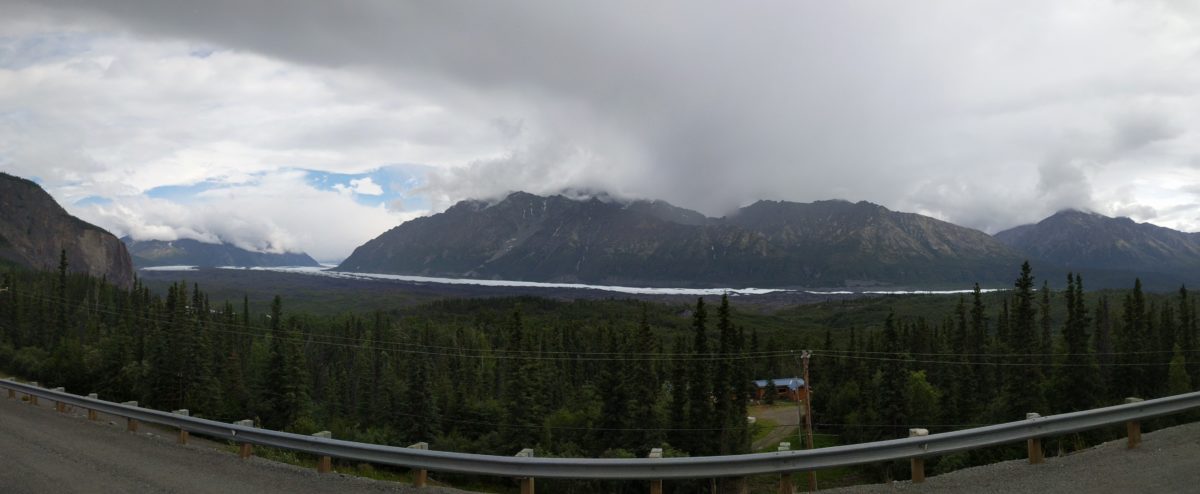Ranges rise and fall past me: The Northern Rockies, the Cassiar and St. Elias in British Columbia and Yukon, the Wrangell and Chugach in Alaska.
I have spent days now trying to think of words for mountains, and I might not have it in me. It might not be possible. They are all different, and yet similar; they have tribes and groupings and families, yet each is its own iteration. It is as meaningful and meaningless to say they are alike or not as it is to say that people are all essentially the same, or all unique.
Some are reddish-brown, some are white; some are black, or slate-grey, or cloud-colored. Some are smooth, some are striated, some are wooded. Some seem bent on thrusting upwards, some seem only interested in the downward plunge, the talus slope, valley-building and river-cutting. Some are teeth, some are legs and arms, some are walls. Some tower, some huddle. Some writhe and some rest. Some bring doom. Some bring peace.
Geologists have more words for mountains than the rest of us, but those only go part of the way. The remainder might not be in a language that we actually speak. When we name mountains, we are trying; not the bland, bureaucratic names of presidents, but the older names, the names we couldn’t resist giving them because we needed to say something, to address the mountains somehow.
But the language of rocks is lost to us, as lost as Eden.

Each range has more snow than the last, and the clouds get closer. At 3000 feet, Alaska Highway 1 west of Glennallen is almost in the sky. The tops of the Chugach boil away into mist, great plumes of white tumbling off of their peaks as if they were steaming volcanoes. The line between mountain and cloud seems confused, and it’s easy to imagine that if you reached the top you could just keep going, transitioning from mountain range to cloud range and hiking on.
Then Matanuska spills out across the land, a great ruinous white dragon reaching down from sky to earth; Matanuska, land-breaker, earth-shaper, vast and old and sleeping in the valley below the road, 27 miles from tail to nose and boundlessly old, one of the mightiest glaciers on the continent.
Where he has curled back his toes the ground is destroyed, black and blasted and churned.
Off to one side, through cracks in his hide, there is an eerie blue glow. It is the same blue as the magic rivers in the Cassiar Mountains, the color of the soul of water.
This is his land, and we pay him tribute by naming rivers, roads and ships in his honor. In return, he sleeps a little longer.

